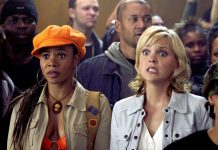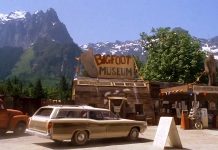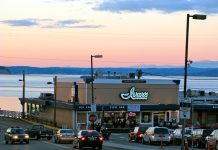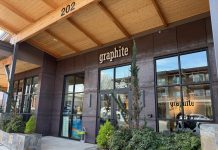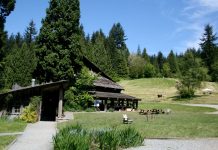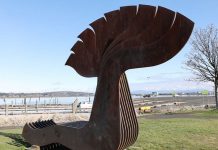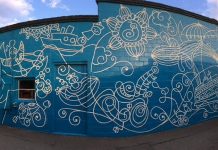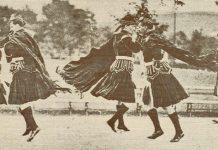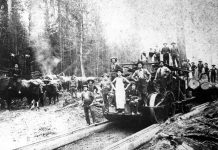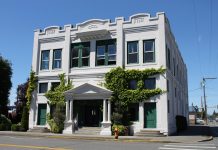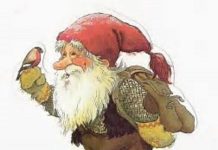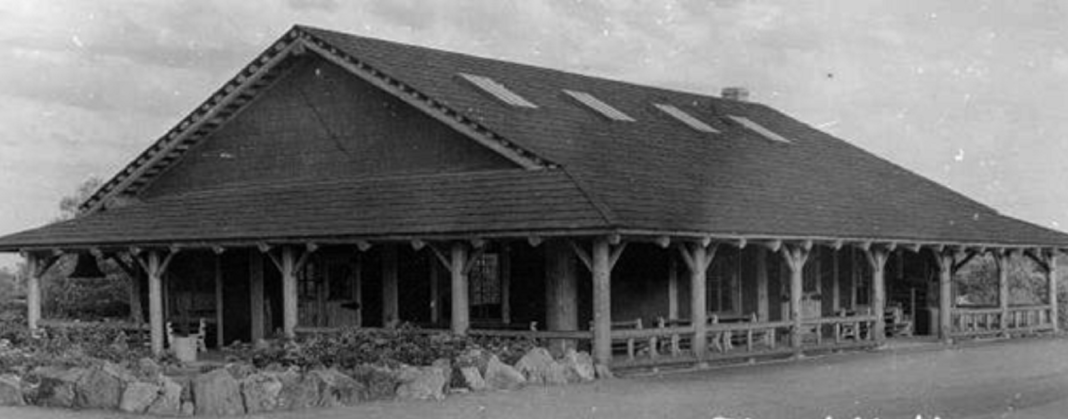Once upon a time, in a sunny seaside town on a peninsula at the mouth of the Snohomish River, there lay an enchanted forest. But it wasn’t just any enchanted forest. This one was special. A hidden gem in its quiet oasis, villagers and visitors alike flocked to this earthy paradise hoping to discover the secret treasures tucked away within its borders: a zoo teeming with exotic animals.
Nestled amongst the ancient cedars and whispering pines, this haven, known first as the Forest Park Zoo and later Forest Park Animal Farm, offered visitors a glimpse into the wild, presenting unique opportunities to come face-to-face with the wonders of the animal kingdom without ever having to leave Snohomish County.
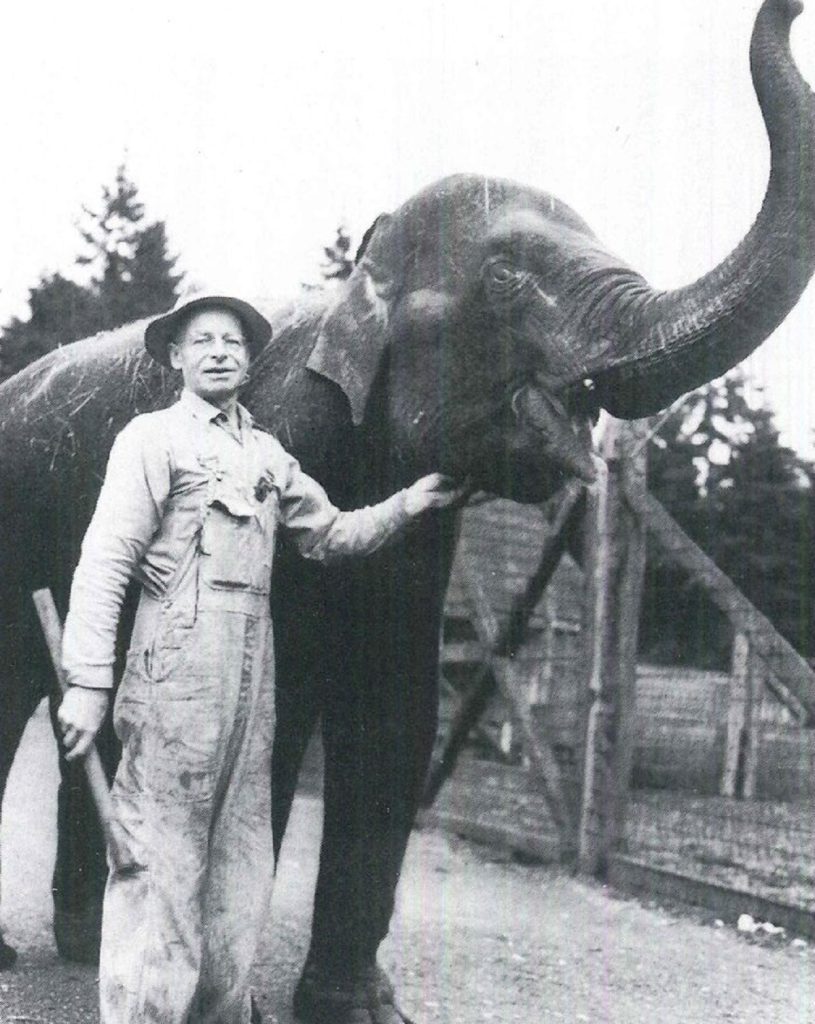
An Everett’s Fairytale: The Enchanted Beginnings of the Forest Park Zoo’s Story
For Everett residents, the Forest Park Animal Farm’s presence was a tale as old as time until very recently. Like any main character, the local menagerie would undergo a series of transformations over many years, beginning its life by breeding excitement into an already budding Forest Park.
The first ten acres of this particular park were purchased during Everett’s formative years in September of 1894 for $4300, with a stipulation that $600 in improvements were to be completed in the next five years. Eventually, voters approved a five-person Park Commission appointed by the Mayor in 1907. From there, 80 acres of land were purchased to expand the land, leading to Forest Park being officially named in 1913. However, the real magic would begin a year later, in 1914.
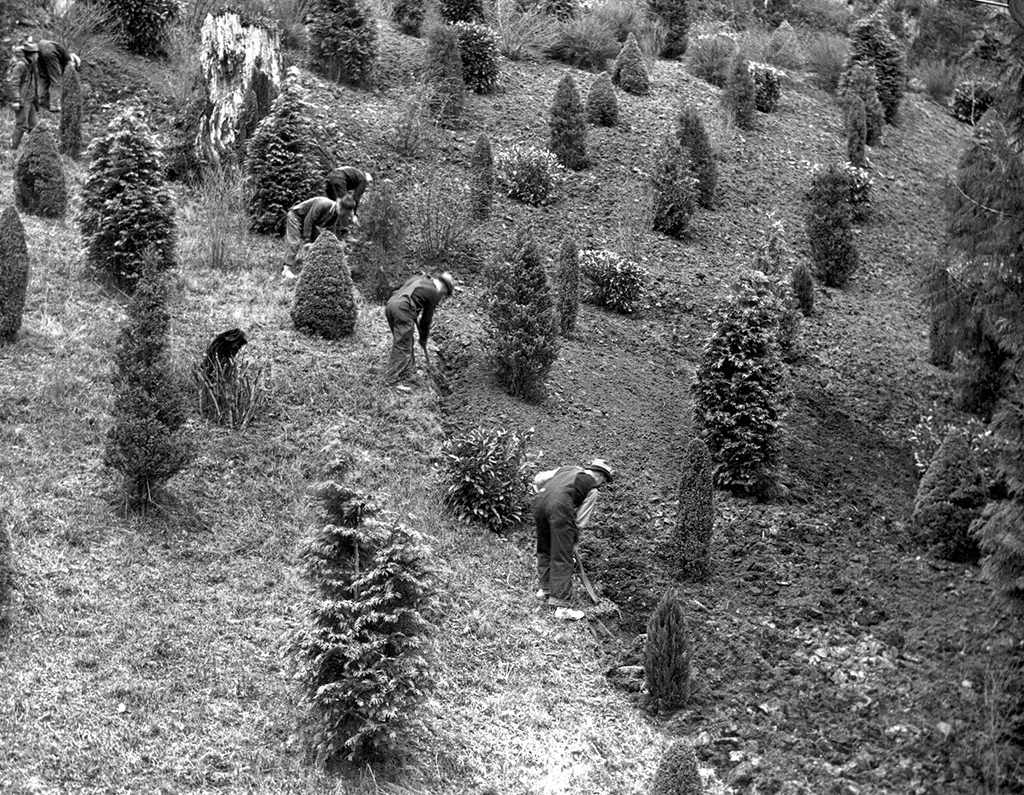
The Animal Kingdom Makes its Way to Forest Park to Become Everett’s Zoo
It all started with three deer, two coyotes, and two pelicans gifted to the city by the game warden. Five years later, the number of creatures found within the park was enough to establish the official Forest Park Zoo in 1919. At the time, Oden Hall, his brother Walter, and his nephew John were the driving force behind the park’s expansion, with Oden running the show.
Since the zoo was just in its formative years and had little money, Oden got creative with accumulating more animals and feeding the ones they had. He often collected young animals from overcrowded parks along the West Coast, including British Columbia, and traded with circuses traveling through the area. He and his brothers raised food for the birds and other non-carnivore animals and spoke with local farmers and highway patrols, requesting that they notify them of dead livestock or roadkill.
Thus, the zoo began to bloom, thanks to the hard work of the Halls. It is said that by the 1920s, there were already 200 animals in the park, including bison, elk, zebra, an Indian elephant named Rosie, a badger, four bears, and a marmot, among others. Later, lions, leopards, an owls, peacocks, monkeys, and an eagle were added. By 1919, Oden Hall was appointed the park’s first superintendent and was about to conduct one of Washington State’s most significant Works Progress Administration (WPA) projects under Franklin Roosevelt’s New Deal.
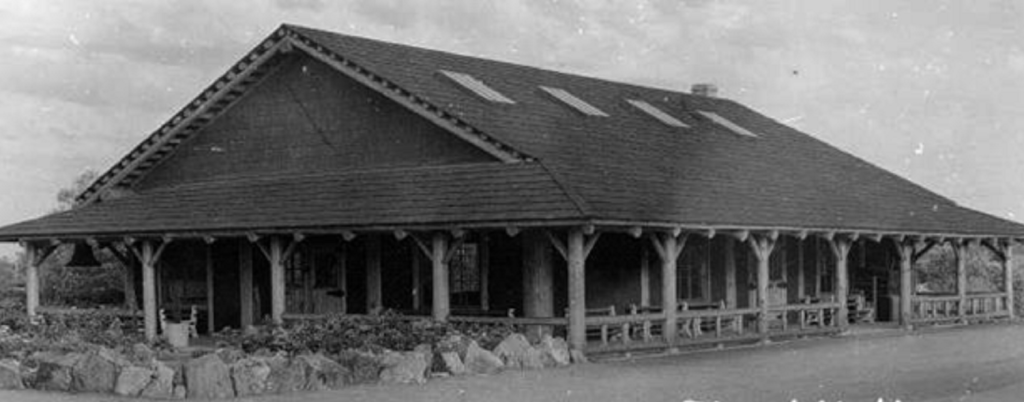
The Forest Park Zoo Gets a Cinderella-Worthy Makeover With the Help of the Works Progress Administration in the 1930s
Though the Halls were crafty in their accumulation of animals and feed for them, much of the park’s early success was due to the city’s generosity and charitable donations. Initially, an emergency fund was created from the park budget at the start in 1915, with funds being used to put unemployed people to work on improvements to the park. As the collection of animals grew, more land was purchased to expand the zoo the following year, in 1916. A bond approval of $13,000 went towards more improvements to the zoo, playground, and park the same year the zoo was officially established as visitor numbers began to increase.
As with every good storyline, however, timing is everything, and the Forest Park Zoo found some of its most formative years being impacted by the Great Depression, just like the rest of the world. Thankfully, the WPA took an interest in the zoo and undertook its landscape and design transformation as one of the administration’s first projects. They employed hundreds of workers to clear land, build park structures, plant specimen and native trees, and build cages for the zoo animals. Some of the rock walls they constructed are still in place today, and they even created an extensive trail system and terraced the hillside, with many of these plantings on the south of Mukilteo Boulevard and below the ballfield having retained much of the park’s original design.
However, the real gem and centerpiece of the design under these extensive renovations was the construction of Floral Hall. The one-story public exhibition space was built from lumber logged near Three Lakes in the National Park rustic style, situated on a wooded promontory overlooking the rest of the park. It was completed in 1940, just in time for the Snohomish County Gladiolus Society’s show, as it became the home of many flower shows throughout the decades.
With these tremendous upgrades to Forest Park, Oden Hall felt he could retire as superintendent with ease in 1939 and let the rest of the story unfold for this zoo that was about to shed its wild side and embrace a more down-home charm.
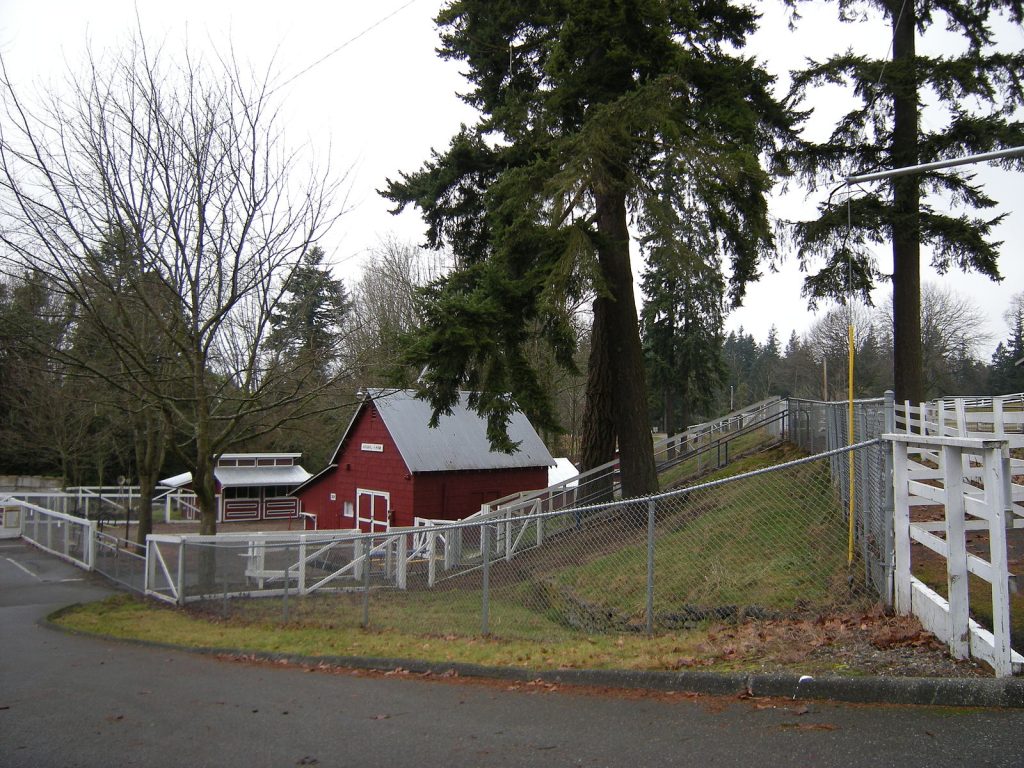
Forest Park Zoo Undergoes a Whimsical Metamorphosis and Heartwarming Transformation into Forest Park Animal Farm
Like many zoos of its time, Forest Park Zoo was run by a series of “well-meaning amateurs,” created mainly with good intentions to put people in closer touch with nature and the animals with whom we share this great, big world. It was a time when people believed these wild animals were best cared for and preserved in a zoo setting.
Eventually, television brought filmed-on-location nature programs into homes in the 1950s, resulting in public attitudes changing and support waning for amateur zoos. The lack of visitors to the zoo couldn’t have come at a worse time, as it was already becoming too expensive to keep up, and they were already having to scale it back. During this decade of decrease, voters turned down three bond issues to fund the zoo, and it wasn’t long before the zookeeper position was eliminated in 1958. Slowly, the Forest Park animals were transferred to other wildlife preserves and sanctuaries, and by 1962, most of the zoo had been torn down. For many years after, peacocks were known to be found walking freely in the park, their sanctuary a forgotten relic.
Meanwhile, an attempt to regain public interest and keep some of the animals considered local wildlife or barnyard buddies aided in creating the Forest Park Animal Farm in 1970. The farm was home to various rabbits, ducks, pigs, goats, and ponies, among other animals you’d typically find on the farm. The last zoo animals, bears, were removed from the park in 1976 and sent to the Olympic Game Farm in Sequim. The focus was also on the Floral Hall as a dance floor, and a kitchen was added in the 1960s to further accommodate its role as a community gathering place and event center. It was later renovated in 1989 and placed on the National Register of Historic Places the following year.
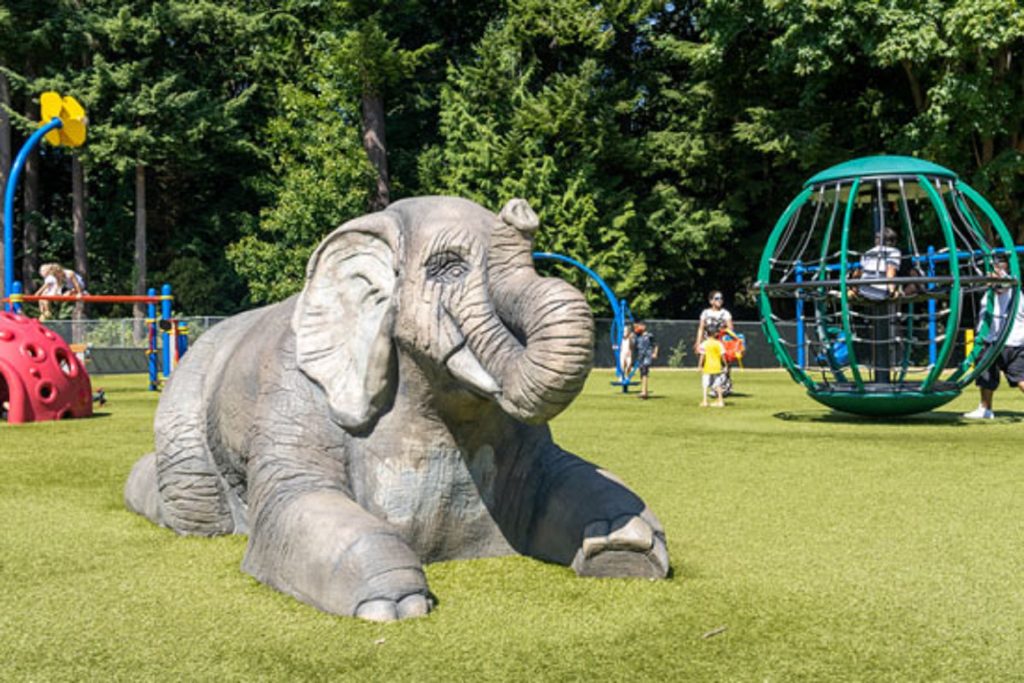
Life’s Not Always a Fairytale: Forest Park Animal Farm Closes, With a Happy Ending for the Animals
It was the dawning of a new era in Forest Park, with a beloved petting zoo now taking center stage as its main attraction, all while the social events of the season were held in the new and improved Floral Hall. It was a special place where visitors of all ages could have a close-up experience with friendly farm animals, with park staff supervising and offering educational programs. Having been built on the old zoo’s large animal exhibit site, it was even large enough to provide young visitors with pony rides.
For decades, it was adored by the public, but as the times changed, so did the support the Animal Farm needed to ensure its legacy. At the end of its years, maintenance and staffing costs threatened its continuance. Visitations had always been free, donations were seldom and always happily accepted, and it cost the city about $70,000 a year.
The final blow to Forest Park Animal Farm would be from the COVID-19 pandemic. With a nation in crisis, the petting zoo could not secure funding. Thus, the Forest Park Animal Farm was no more.
Gone, but not forgotten. Though the story may end sadly with Snohomish County’s exotic animal kingdom closing, there is always a silver lining to any tale. In this case, one could argue that the true happy ending lies with the farm volunteers who worked hard to ensure that each animal was relocated to a new home that best suited them and their needs. For some, the happy ending is the memories they made at either Forest Park Zoo or Forest Park Animal Farm all those years ago.
For some, this may not even be the end of the story but rather the beginning of a new one with new memories. Remember Rose the Elephant? Next time you find yourself at the playground in Forest Park, take a look at its centerpiece. Rosie is still there, telling her story.

